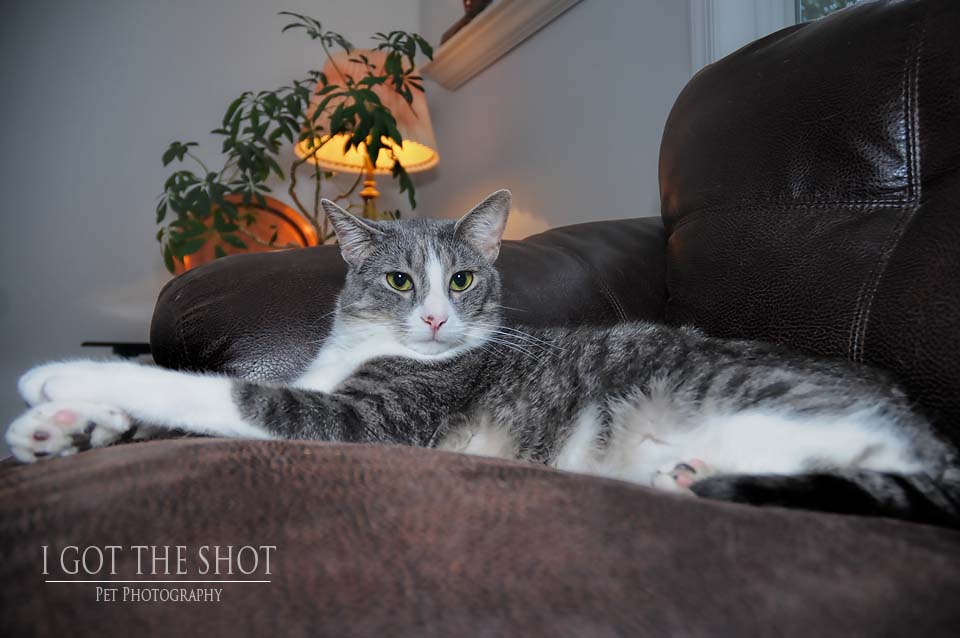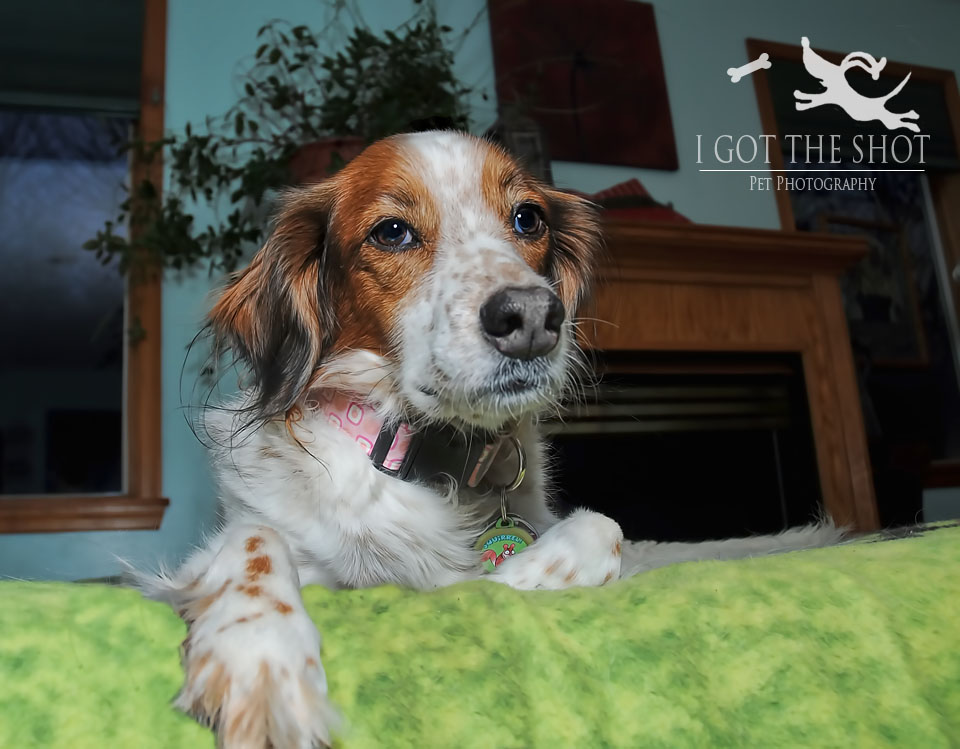I have been doing so much portrait work with the typical prime lenses, that I have not been using my wide angle lenses lately. Silly me, I should actually be using them in my portrait work sometimes as well. I forgot how much I like what a wide angle lens has to offer.
Using different lenses often requires using a different approach to setting up a photo. When using a wide angle lens, with a wider field of view, more elements are a part of the photo, so you have to make an executive decision about how to set the photo up and what elements you want to include. Also, wide angle lenses often make close objects appear larger than distant objects in a way that lends energy to the photo.
I used an 18-70 Nikkor lens this week. I decided, due to the monsoons of Pennsylvania, to stay indoors and to just use everyday life as my subject base. This would be especially difficult in our house with a wide angle lens. To make it even more challenging, I took the bulk of my shots in a cluttered area (view-wise) and nearing twilight. I used a camera mounted flash with a diffuser, and bounced light off of my white ceiling.
Two things which our author noted this week, which I believe are the most important thoughts about using wide angle lenses:
- Because they diminish the size of the elements in the frame relative to real life, wide-angle lenses must be pushed in closer to a subject to keep the subject larger in the frame, thus exaggerating the lines.
- Wide-angle lenses are harder to use because they allow so much to be included in the frame, which means greater care is needed to choose a point of view. (The Visual Toolbox: David Duchemin)
My final photo is of our little Beth, because she ultimately decided Luke was getting too much attention. I left lots of the background elements in this photo, but Beth is still up front and the major attraction, thanks to getting in close with the wide angle lens. Yes that is a squirrel on her collar tag. Yes, she chases them.




 RSS Feed
RSS Feed